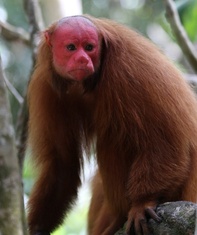
Animals of the Week #1
Last updated: Wednesday July 7th, 2021
Report this blog
Some More Information
The idea of this series is that each week, I will post a blog that educates you about six different animals, one mammal, bird, reptile, amphibian, fish, and invertebrate. This is inspired by my fascination with the zoological world, so I hope to bring the wonders of animals to you. This is the first edition, and I do hope you enjoy it. Let's get started!
Mammal: Bald Uakari
With a unique name and a distinct appearance, the bald uakari is one of the rarest monkeys on earth. They have a striking look with shaggy reddish-orange fur, bright red faces, and a surprising bald head that certainly leaves anyone who sees this uncommon primate scratching their head. Bald uakaris' natural habitats are restricted to the Amazon River basin near water sources, in troops of up to 100, although they split up while foraging for fruit, leaves, and insects. In addition to their bizarre appearance, they also have extremely short tails in contrast to other monkeys, but they travel through the trees just as fine with their arms and legs. Sadly, deforestation, hunting, and capture from the indigenous people threaten the bald uakari, and this remarkable simian's population is rapidly decreasing.
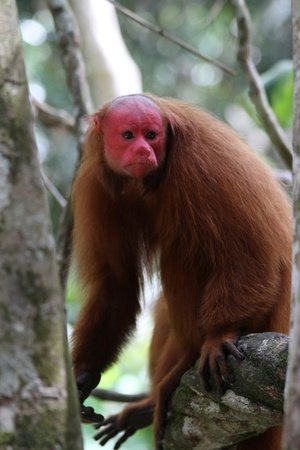
Bird: Gentoo Penguin
The Gentoo penguin is part of the flightless penguin family that is globally known for humorous charisma. Exuberant red beaks and an iconic black-and-white appearance make Gentoos stand out in the bland Antarctic environment, chiefly the Antarctic Peninsula and the surrounding islands. With a height that can grow to 30 inches or around 76 centimeters, the charming penguins are the third-largest of their species, gathering in breeding colonies that can harbor from a few dozen to thousands of nurturing birds. Awkward on land and graceful underwater like all penguins, Gentoos' sleek bodies propel them to speeds of 22 miles per hour (approximately 35 kilometers per hour) - the fastest of any diving bird - to hunt prey like krill, squid, and fish, staying beneath the surface for up to seven minutes. Menacing orcas, leopard seals, and sea lions are some common predators of the Gentoo penguin in the water, while on land, chicks are vulnerable to birds like skuas and caracaras, although adults have no land predators other than humans. Gentoos are currently protected by 1959's Antarctic Treaty, and luckily, are only ranked as "Near Threatened" by the International Union for Conservation of Nature (IUCN).
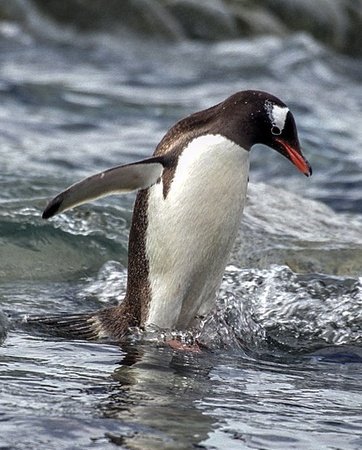
Reptile: Gharial
Upon first glance at this abnormal creature, you may think something is up. It's not a normal "crocodile." And for those who don't know what the marvelously eccentric gharial is, it is not a crocodile, alligator, or caiman, but an entirely different crocodilian species. Along with the tomistoma, or false gharial, it makes up the Gavialidae family, and its slender, elongated snout is impossible to miss. Once abundant throughout rivers of South Asia, the gharial now sparsely populates small regions in Nepal and northern India, and is suited for a mainly aquatic lifestyle, only departing from water when basking or nesting. Its diet is ... repetitious, consisting of mainly fish, while juveniles also sometimes consume insects, crustaceans, and frogs. Razor-sharp, interlocking teeth and the gharial's evidently unique snout help it swiftly capture prey in the water. The distinct reptilians are also some of the largest crocodilians in the world, with males reaching 16-20 feet (5-6 meters) in length, while females are usually 11.5-15 feet (3.5-4.5 meters) long. Unfortunately, gharials, like many other animals, are in extreme danger, listed as "Critically Endangered" by the IUCN, but let's hope that this weird yet wonderful creature is preserved.
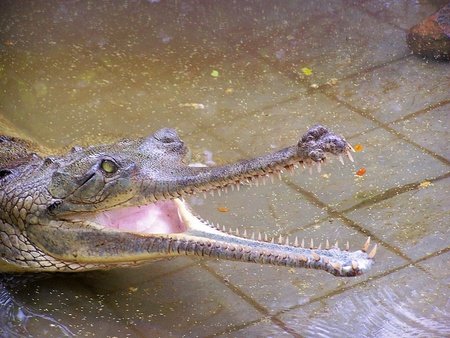
Amphibian: African Clawed Frog
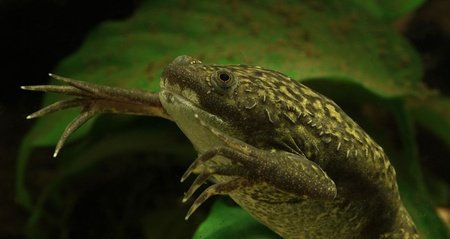
When looking closely at this image, it's hard to fathom that a frog can have such odd structures, but this is one hundred percent real. The African clawed frog, well-deserving of its name, is a frog in the Pipidae family native to the African Rift Valley south of the Sahara Desert in eastern and southern Africa, although it has been heavily introduced to other freshwater environments all around the world, such as in Chile, the U.S., Indonesia, France, Portugal, and Namibia, and has become something of an invasive species. They are highly opportunistic and adaptable, meaning they quickly spread in new environments and are proficient at handling challenges. The unique frog has small front limbs with non-webbed fingers and large, webbed hind legs, each of its feet having three inner toes with "claws." These apparent "claws" are used to defend against predators and to rip apart prey, like insects, crustaceans, fish, and tadpoles, though African clawed frogs scavenge consistently. Overall, the clawed frog is quite distinctive and at times can be mystifying, but its distinction makes it a fascinating part of the animal kingdom.
Fish: Basking Shark
As you can probably tell from this picture, the basking shark looks intimidating but is actually a mostly peaceful shark. Despite their lengths of up to 40 feet (12 meters) and predatory appearance, basking sharks are filter feeders and eat strictly minuscule zooplankton. However, scientists have some gaps in terms of how much they know about the life history of the second-largest shark (and fish, for that matter) in the world, chiefly because they frequently move and don't stay in one place for over a few months. The largest fish, the whale shark, is quite different from them in terms of reproduction; in fact, whale sharks give live birth to hundreds of small babies, while basking sharks also conceive live offspring, but only a few large ones, which, at their minimum size of six feet/two meters, are thought to be the largest babies of all fishes by shark biologists. As is the case with most majestic creatures, though, the basking shark is now vulnerable to extinction after centuries of European fishing - even though numerous countries have given legal protection, legal fisheries still exist and sometimes inadvertently catch basking sharks. Scientists still have much more to learn about these peaceful fish, but hopefully they'll be protected until then.
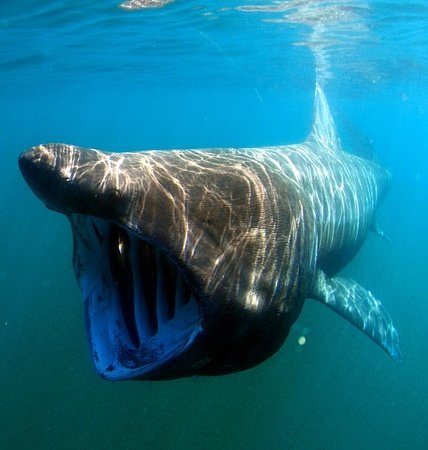
Invertebrate: Colossal Squid
Gigantic, elusive, mysterious creatures lurk in the depths of the Antarctic, and those are the largest invertebrates known to man, colossal squid (also known as the Antarctic cranch squid). Fitting of their name, these humongous squid can grow to 46 feet (14 meters), making them even bigger than their well-known relative, the giant squid, and weigh up to around 330.5 pounds, or 150 kilograms. (They also have the largest eyes of any known animal, at 10.5 inches, or 27 centimeters.)The astonishing creatures were first discovered in 1925 when two colossal squid arms were found in the stomach of a sperm whale, the only known predator to adults. Ever since, very few specimens have been uncovered, and add on top of that that they live in very remote, isolated habitats that are difficult for us to study, there is generally not enough information about colossal squid to determine many things, including their conservation status. Perhaps in the future we will reveal the secrets of nature's largest invertebrate, but for now, this remarkable animal remains an enigma.

Conclusion
Thanks for reading, and I hope you enjoyed this blog, learned something new, or preferably both! I will attempt to post a blog like this every week, but I'm not sure if I will be able to every single week, so keep that in mind. Now, if you read this blog, I want to know if you knew any of these animals before reading, and if so, which ones. With that said, enjoy your summer and I'll see you next time!

Mammal: Western Lowland Gorilla
Fish: Spade Toothed Wale
Reptile: Poison Dart Frog
Amphibian: Racophorus
WHALES ARE NOT FISH. NOT. They are marine mammals, along with dolphins, seals, sea lions, walruses, sea otters, etc. Poison dart frogs are ... frogs, and frogs are amphibians.
Now, as for the ostrich and rhacophorus, I was thinking of something more ... idiosyncratic. I would do the WL gorilla, but it is very well-known and I've already done a primate. Even if I did do the spade-toothed whale for mammals, it is very little-known and rare.
Thanks anyway.
Marine mammals like dolphins and whales move their tail up and down, unlike fish. They also cannot breathe underwater with the absence of gills.
Not every oceanic creature is a fish. FacterLiger is 100% right about marine mammals not being fish and why, but there are also other marine animals like crustaceans, reptiles like sea snakes and turtles, mollusks like octopuses, squid, cuttlefish, snails, etc. and more.
Also, frogs are not reptiles. Look it up, and find out the many reasons why they are not.